Sample information |
|
| Picture |
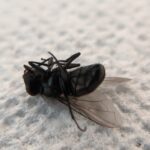
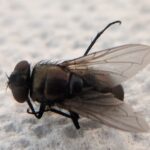
|
|---|---|
| Location | |
| Collection date | 08/30/2020 |
| Captive / Cultivated? | Wild-caught |
| Group | Bordenstein Lab |
| Observations | This blowfly was buzzing around my patio, landed in my glass of water, and drowned. It was collected by using forceps to pull out of the water. |
| Putative identification | Arthropoda Insecta Diptera Calliphoridae Lucilia Lucilia cuprina |
Methods |
|
| Extraction kit | DNeasy (Qiagen) |
| DNA extraction location | Abdomen |
| Single or Duplex PCR | |
| Gel electrophoresis system | MiniOne |
| Buffer | TBE |
| DNA stain | GelGreen |
| Gel images |
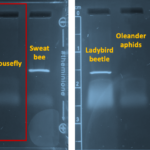
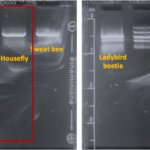
|
| Protocol notes | The fly was stored in 70% ethanol at room temperature for about 3 weeks prior to DNA extraction. DNA Extraction: The fly was incubated in lysis buffer at 56C for 2 hours. Because there was cell debris, I did a 30 sec spin and transferred the supernatant to a fresh tube of 200ul ethanol. This was placed in the freezer overnight and DNA was purified the following day. Eluted DNA was immediately incubated at 65C for one hour prior to PCR. PCR: MiniOne Taq polymerase was used. Gel electrophoresis: The arthropod gel looks whispy; however, that went away as the gel ran longer. This could have been caused by not adding loading dye to samples. The results were very clear, though. I re-colored the gel images in PowerPoint. The MiniOne ladder contains 5 bands: 100, 300, 500, 1000, and 2000 bp. This sample was labeled as “blowfly” |
Results |
|
| Wolbachia presence | No |
| Confidence level | High |
| Explanation of confidence level | The DNA extraction was successful because the arthropod COI amplified. Both (+) and (-) controls worked. The Wolbachia 16S rRNA band was absent. Sanger sequencing revealed, with 100% identity, that it was an Australian sheep blowfly and not a housefly, as originally predicted. |
| Wolbachia 16S sequence | |
| Arthropod COI sequence | Download FASTA
Download AB1
AATTGGAACTTCTTTAAGAATTCTAATTCGAGCTGAATTAGGACACCCTGGAGCTTTAATTGGAGATGATCAAATTTATAATGTAATTGTTACAGCTCATGCTTTTATTATAATTTTTTTTATAGTAATGCCAATTATAATTGGAGGATTTGGAAATTGATTAGTTCCATTAATACTAGGAGCTCCAGATATAGCATTCCCTCGAATAAATAATATAAGTTTTTGACTTTTACCTCCTGCATTAACTTTATTATTAGTTAGTAGTATAGTAGAAAACGGAGCTGGAACAGGATGAACAGTTTACCCTCCCCTATCTTCTAATATTGCTCATGGAGGAGCTTCTGTTGATTTAGCTATTTTCTCTCTTCATTTAGCAGGAATTTCTTCAATTTTAGGAGCTGTAAATTTTATTACTACAGTTATTAATATACGATCAACAGGAATTACTTTTGATCGAATACCTTTATTTGTTTGATCAGTAGTAATTACAGCTTTATTGCTTTTATTATCATTACCAGTATTAGCAGGAGCTATTACAATACTTTTAACAGACCGAAATCTTAATACATCATTCTTTGATCCTGCAGGAGGAGGAGATCCAATTTTATACCAACATTTATTTT
BLAST at The Wolbachia Project BLAST at NCBI
|
| Summary | The Lucilia cuprina was found to be negative for Wolbachia. |
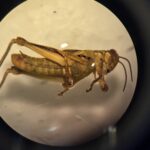 Differential Grasshopper – Melanoplus differentialis
Differential Grasshopper – Melanoplus differentialis Pill Bug (Armadillidium vulgare) – Draft
Pill Bug (Armadillidium vulgare) – Draft Melanoplus Femurrubrum
Melanoplus Femurrubrum Grasshopper – Orthoptera
Grasshopper – Orthoptera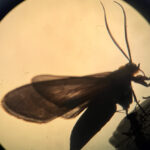 Cisseps Fulvicollis
Cisseps Fulvicollis